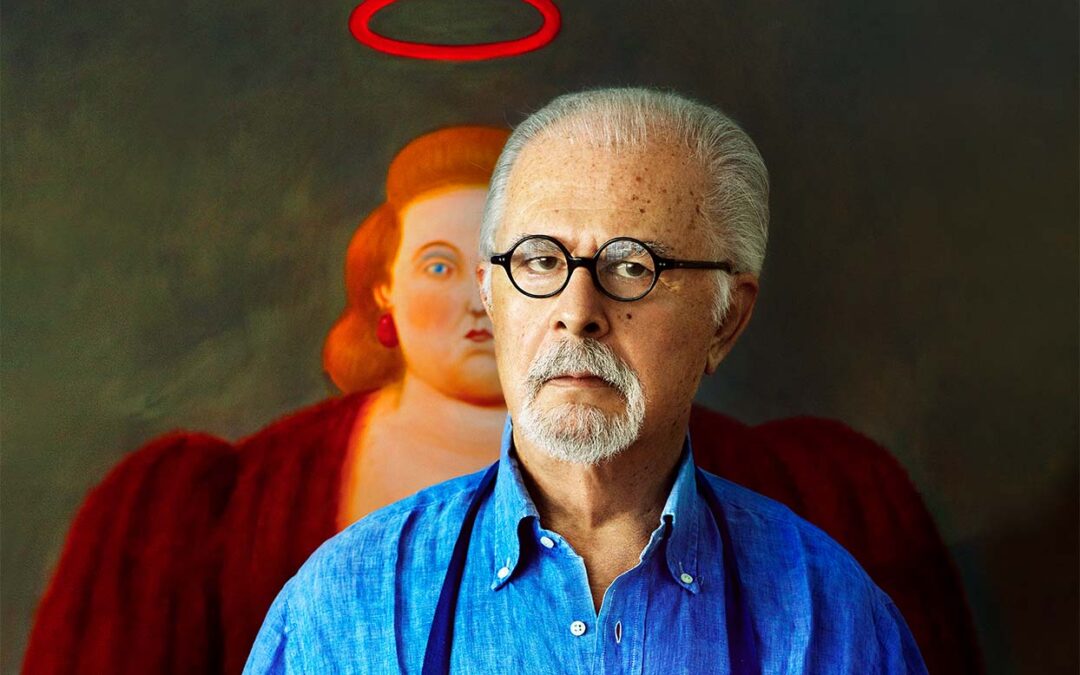Born in Medellin, Colombia, in 1932, Fernando Botero is one of the world’s most recognized living artists of our time.
With his first paintings and drawings inspired by Gustave Doré’s engravings of the Divine Comedy, and posters of bullfights, Botero held his first exhibition in Bogota, Colombia, in 1951, and in 1952, he won second place in the “Salón Nacional de Artistas” in Bogota. With his prize money, he traveled to Madrid and Florence, where he studied the Renaissance masters and explored volume and perspective. With a style that is immediately recognized and celebrated, Botero has maintained throughout his career, the essence of Colombian and Latin American elements in his creation.
Renowned for his distinctive style and exploration with color and exaggerated volume, Fernando Botero’s Boterismo single handedly redefined beauty using sensual and voluptuous forms and a pioneering notion of aesthetics so much so that his work has been recognized across cultural and geographical borders, far from his hometown in Colombia.
Although his subject matter has always been local, his universal language of art is what propelled him to worldwide success. With a career spanning over 50 years and having exhibited all over the world, Fernando Botero is an iconic living artist of our time. Maestro Fernando Botero turned 91 this year and is still actively creating artwork today.
Fernando Botero: The Master is on display at the Garden Oct. 7 through March 31. The exhibition is a collaboration with the Museum of Latin American Art (MOLAA) in Long Beach, California which is dedicated to modern and contemporary Latin American and Latin art.
Dive deeper into Botero’s work and learn more about his life with a Q&A conducted by MOLAA Chief Curator Gabriela Urtiaga.
Q. To start our conversation, I would like you to introduce us to your creative process: your main research topics, your concerns – which clearly have accompanied you throughout your marvelous artistic journey.
A. I have always said that, if you are a true painter, everything you see is an excuse to paint. And it is true that I didn’t have any professional training in painting. But I had an enormous passion for painting and drawing. Ever since I was a boy I have only found true pleasure in the art of painting and drawing. And that is what makes a true artist an artist: the passion and love he has for his craft and the will to pursue it every day of his life.
I had a curious experience once trying to paint a man standing in front of me: I went to a marketplace and started to paint someone. But the man realized that I was painting him. Suddenly, he came and tore the sheet; that is how I learned that one could not paint with a model in that way. I could not be looking at someone and painting him because that could bother him. He tore the sheet away and that was all.
After that, I have never, ever, ever painted with a model in front. In none of my works. They are traces of my memory. So, if I don’t need a model in front, I clearly don’t need it to paint a house or to paint the roof of clay; everything is from memory. I can express with the help of my memory all those atmospheres and characters, all of the “paisa” culture in which I lived for 20 years. That remains within you. That was where I learned to live, because I learned to move among all these things, among all these objects, and those streets and palms … it’s this entire wonderful atmosphere that remains deep in your memory.
Q. I am interested in delving deeper into the conception of your artwork, in your profound interest in the bond between art and life. What is the relationship you establish between art and reality? Do you find a utopic component in your work?
A. I am interested in expressing the manifestation of volume in art. I started to paint these volumetric figures when I was 17. There are still watercolors of my most early works that you can find in catalogues that have a particular disproportion of the form. But I did not know why I did it. I did it by intuition… because it said something to me. Then, of course, when I was in Europe, especially in Italy, I rationalized the importance of volume because I saw that all Italian painters like Michelangelo, Raphael, Giotto, Masaccio, Piero della Francesca made a celebration of volume. There is a great use of volume, especially in Italian painting, which is volumetric. And they did it to exalt the sensuality of the subject, to exalt the form and color; everything in those paintings was a celebration. Because art is always an exaggeration; the painter exaggerates the color or the shape or exaggerates the line. There is always an exaggeration.
Q. According to your idea that art must generate more optimism and beauty, what message do you wish to share and leave with your audience?
A. I always said “What you achieve in life, is a function of your admirations.” The most important thing in life is who you admire, If you want to be an artist, always look up to those great artists that inspire you and push you to be a better person, a better artist and constantly keep learning every day.
